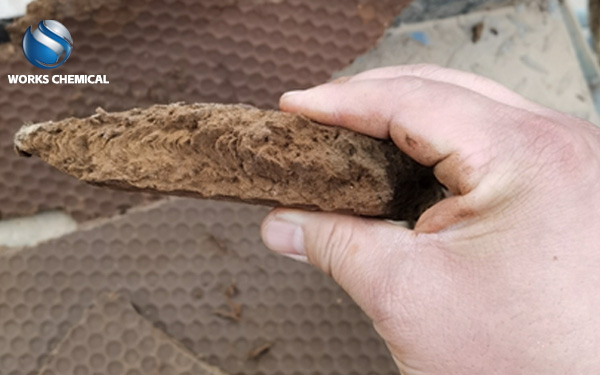
Sludge enhancer plays a crucial role in the sludge treatment process, which changes the internal structure of the sludge through a variety of mechanisms, thus significantly improving the dewatering effect of the sludge. The following is the specific way that sludge synergists change the internal treatment of sludge:

1. Change sludge particle structure
The sludge synergist can penetrate into the sludge particles and change its structure through physical and chemical action. These effects include forming hydrogen and ionic bonds with the water in the sludge, increasing the binding force between the sludge particles, and bringing the sludge particles closer together. This structural change helps to reduce the porosity in the sludge, making it easier for water to be expelled.
2. Promote water migration
The sludge enhancer can also promote the migration of water inside the sludge particles to the surface of the particles. By stimulating the microstructure inside the sludge particles, the dehydrating agent can accelerate the release rate of water, so that water can migrate to the surface of the sludge particles more quickly. This process helps to improve the dehydration efficiency and reduce the final water content of the sludge.
3. Strengthen flocculation
Some sludge synergists have the effect of enhancing flocculation. They can react with colloidal particles in the sludge to form large flocs. These flocs have better settling properties and are able to settle down more quickly during dehydration, thus improving the dehydration effect.
4. Damage the cell structure
Some advanced sludge conditioners also incorporate wall breaking agents and other components, which can destroy the cell structure of microorganisms in the sludge and release intracellular water. Intracellular water is usually difficult to remove by conventional methods, but by destroying the cell structure, the dehydration efficiency of the sludge can be significantly improved.
5. Reduce specific surface area
Sludge enhancers can also reduce the surface tension of sludge particles by reducing their specific surface area. The reduction of the specific surface area helps to reduce the adsorption of water by sludge particles, making it easier for water to escape from the sludge.
6. Forming a protective film
In the process of dehydration, some sludge synergists can also form a protective film on the surface of the sludge particles. This protective film prevents water from re-penetrating into the sludge particles, thereby maintaining the durability of the dewatering effect.
In summary, the sludge synergist significantly changed the internal treatment process of sludge and improved the dewatering efficiency and effect of sludge by changing the particle structure of sludge, promoting water migration, strengthening flocculation, destroying cell structure, reducing specific surface area and forming protective film. These changes not only help to reduce the final water content of the sludge, but also help to reduce the resource consumption and environmental pollution in the sludge treatment process.